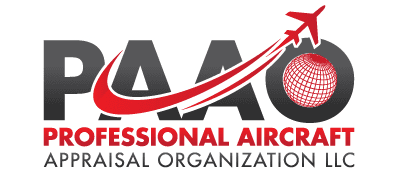3 Steps to Take Now to Reduce the Risk of Aircraft Repossession

The impacts of the COVID-19 virus are going to be felt for some time – and this includes aircraft owners too. Some owners who are in financial distress and who have liens on their aircraft will not reach out to their banks and bankers to discuss options that are available to them if they are under financial distress. As a result, credit unions, aircraft finance companies, banks and bankers are left with very few options when multiple payments are missed. However, the banks, finance companies and their representatives play a part too because the basic problem is a lack of communication and information that leads to a bad outcome for the financial institution itself, the owner, the aircraft and the aircraft financing industry in general. In this article, we’re going to look at steps that a bank can take to reduce their exposure to aircraft repossessions.
Back in the financial crisis of 2007-2008, some banks (who happened to have a number of aircraft in their portfolio) failed and these aircraft loans were taken over by banks who acquired these assets (some were troubled assets to be sure). During this period, I worked with several banks who were foreclosing on brokers, owners and so forth and I was surprised by several key attributes that could easily be avoided and addressed but routinely were not. Let’s take a look at some of these attributes and ways to take action NOW to avoid repossessions or in the event the aircraft is repossessed, the financial institution is in a reasonably good position (as much as they can be).
The first attribute involves the bank or finance company not understanding and validating the aircraft that they are lending against. When the economy is good, those involved with financing aircraft purchases tend to rely on desktop appraisal reports, unqualified evaluators or whatever the broker/dealer says because, after all, those types of evaluations are cheap, quick and provide the results the bank/credit union/finance company is looking for and this is especially true if the aircraft is newer and burns Jet A. Unfortunately, if no field visit was involved, the information they have on file is most likely incorrect to some degree and the aircraft is most likely overvalued meaning that the bank or finance company has over-extended on its lending policy – if they followed a lending policy at all. Of course, over time, the market for this aircraft changed or the initial plans for the aircraft changed. Maintenance and upkeep were more than forecast or owners decided on different transportation options. Regardless, this is one of the first errors in that NO ONE ever went to look at the aircraft initially, digitize the records or revisit the aircraft every so often to ensure that it is being properly maintained and flown. For some reason, banks, credit unions and finance companies appear to be terrified of what they might learn that may kill the deal. Or, the verification is left to a different department to address on the back end of the loan but that verification is also important on the front end too.
The second attribute involves fear from the first attribute. In this situation, the financial institution “knows” or has been made aware of a problem but for whatever reason, they choose to do nothing – which is the easiest decision to make. Many years ago after the last financial crisis, I was told by one banker that they were (at that time at least) required to report “troubled assets” to the government and this information was made publicly available to anyone searching for it. Of course, no one wanted to be high on THAT list nor did they want to show how bad things were in their portfolio. As a result, they simply did little to no investigations of their collateral – and this was true of assets acquired from other bank failures. After all, if the payments are being made, why “poke that bear” and incur that unnecessary expense? Now that everyone is becoming financially stressed to some degree, perhaps it is time to revisit this thinking and start the conversation with owners?
Here is what needs to happen if the objective is to eliminate or reduce aircraft repossessions along with the financial impact of those repossessions.
Step 1 – Have the aircraft professionally appraised if the last appraisal on file was more than three (3) years ago. The old report should have involved a field visit and hopefully you had the aircraft’s logbooks and records digitized (the importance of this will be identified later) at the time of the field visit. If there is no aircraft appraisal report on file and/or no one has ever visited the aircraft or reviewed its records, then the bank/credit union/finance company has a serious problem and the magnitude of the problem is unknown at this point. This is a time to get beyond the fear of knowing and begin dealing with facts and information. Doing nothing or taking no action will be costly at some point.
Step 2 – Let’s presume that you have an appraisal report within the last three (3) years and it involved a field visit. Perhaps it is time to obtain a Collateral Inspection Report for your files? A Collateral Inspection Report should be a routine follow-up effort to the appraisal that checks to see the aircraft is being flown and maintained regularly and properly. It is also a good time to update the digitized logbooks and records (you do have someone doing this – right?). These reports do not provide an indication of the aircraft’s market value as an appraisal report would but they can be a reason to begin a conversation. In other words, if the aircraft is not being flown routinely or maintenance has been deferred, then it may be time to ask the owner “why” and how you might be able to help. For example, all aircraft flying in controlled airspace (with very few exceptions) are required to be compliant with Automatic Dependent Surveillance Broadcast (ADS-B). Are all the aircraft in your portfolio compliant? Do you know or have you relied on the owner to take the necessary action? A simple Collateral Inspection Report would validate this effort. Otherwise, the aircraft is not going to be flown anytime soon and it makes the next step more difficult.
These types of discussions should have already been taking place and perhaps they are and perhaps there are very few options available, but the point is, NOW is the time to begin having those talks and developing a strategy.
Step 3 – In this step, the bank/credit union/finance company needs to repossess the aircraft. This is the worst position to be in because once the bank/credit union/finance company realizes this action is required, they have already suffered a significant loss and are hopelessly too far behind the situation to catch up. They just don’t know how deep the loss is at this point. For example, when I am called in for these types of projects, the owner owes many people for maintenance, hangar rent and even engine overhauls. In more severe cases, avionics may be missing from the aircraft and the logbooks are nowhere to be found – most likely being kept by someone waiting to be paid. Part of the reason for this situation is that the lending institution fails to understand that the aircraft being repossessed NEEDS TO BE SECURED. Otherwise, owners who have free access to the aircraft can do whatever they please (including the removal of expensive equipment and avionics), sell whatever they can on eBay and no one is the wiser. After all, did the Security Agreement happen to list the equipment installed in the aircraft or was the banker relying on the broker’s advertisement which states in small print that it is the responsibility of the buyer to validate all information? Or, perhaps the bank relied on that desktop appraisal which also relied on this same advertisement when they performed their evaluation? Did anyone ever validate that all logbooks and all equipment were present?
Missing logbooks and records present a serious problem to the evaluation of the aircraft as it is not possible to validate the time on the airframe, any repairs from damage events, critical time and cycle details are missing, and the list goes on. THIS is why you want to have the logbooks and records digitized both in the beginning of the loan/lease along with the routine collateral inspection efforts on a regular basis. It protects the owner in the event of catastrophic loss and it protects the lending institution in their recovery efforts if the logs cannot be found for some reason. For example, financial institutions are not in the business of brokering aircraft and prefer to sell the aircraft for whatever they can get. NOT having the logbooks and records makes the aircraft less attractive to potential buyers and the value of the aircraft is severely diminished. In the worst cases, the aircraft is no longer worth the cost and effort of making it airworthy again so the aircraft is sold for scrap or salvage value.
One approach just takes for granted that the entire value of the asset is lost. Perhaps not a big issue for a Cessna single engine aircraft that is over 10 years old but what about that newer Cirrus SR22 or Textron Bonanza that was approaching $1,000,000 at the time of the initial purchase? What about that business jet that may be worth several times this amount?
A few years ago, I attended a meeting involving a number of individuals who finance aircraft. One of these lenders addressed the crowd by saying that if you cannot withstand a loss of $X, then you probably shouldn’t be financing aircraft. That is one approach of course, but I prefer the adage that knowledge is power. When any aircraft owner is in financial distress, it will show up in the aircraft first with deferred maintenance and lower times in the air. Wouldn’t it be great to have the intelligence about this customer earlier rather than later so that a plan can be worked out? Wouldn’t it be great to have this information in a timely manner instead of waiting for the entire relationship to go down the drain? That type of information is one telephone call away. Let us know how we can help you NOW before things get worse.





